Bouliac, Gironde, Nouvelle-Aquitaine 作者: 来源: 发布时间:2021-04-07
I. Population and Area
Total Area: 7,48 km2 (2.89sq mi)
Population in 2017: 3 631
Population Density: 485/km2 (1256/sq mi)
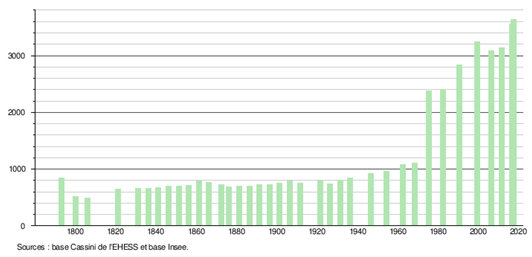
Histogram of demographic change
II. Natural Geography (environment and resources)
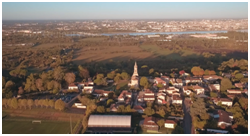
Bouliac is a commune in southwestern France, located in the Gironde department, in the Nouvelle-Aquitaine region.
Located in Entre-deux-Mers, on the right bank of the Garonne, south-east of Bordeaux, in its area and its urban unit, Bouliac presents an excellent view of the Bordeaux agglomeration, from the heights of the esplanade of the Saint-Siméon church.
The town covers an area of more than 7 km2 (748 hectares), with a lower part to the west bounded by the Garonne. The altitude varies from 4 to 84 meters.
Its territory is located on the landscape unit of the Entre-Deux-Mers residential countryside. Some vines are still cultivated there under the appellation premiers-côte-de-bordeaux. But more and more, they are giving way to more and more housing developments.
Transport:
1. The Bordeaux Métropole Transport network (TBM) serves the town through the bus lines: 10, 32 and 62, replaced during off-peak hours by the ResagoBouliac on-demand service and replaced at weekends by the Flexo 38. In the evening, in addition to line 10, the town is served by Flexo 52.
2. The TransGironde lines 403 to 405 and 501 connect the Stalingrad tram station to Camblanes-et-Meynac, Créon, Saint-Léon, Sauveterre-de-Guyenne, Carignan-de-Bordeaux, Saint-Caprais-de-Bordeaux, Tabanac, Cambes , Cadillac and Langon.
With nearly 30 km of circuits and 12 km of paths and trails, Bouliac offers a complete offer in terms of roaming and discovery of the territory. The circuits have been studied to make you discover the whole territory and its points of interest.
Sources : https://explorons.com/bouliac
III. ECONOMY
Employment income (%): 76.2 (2016)
Average employment income (€):3 254net per month (39 043 net per year)(2014)
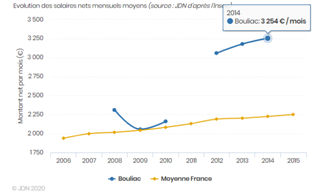
Evolution of average monthly net wages
Sources : http://www.journaldunet.com/business/salaire/bouliac/ville-33065
https://insee.fr/fr/statistiques/2011101?geo=COM-33065#tableau-REV_G1
IV. Industrial Characterisitics
Economic activities in the Bouliac territory mainly come from the tertiary sector. Out of 319 establishments present in the municipality at the end of 2013, 1% were in the agriculture sector (for an average of 6% in the department), 4% in the industry sector, 10% in the construction sector, 76 % of that of trade and services (for 64% on the department) and 9% of the administration and health sector.
The town is in the area of several appellations.
1. Viticulture: AOC AOP Bordeaux white, AOC AOP Bordeaux white with sugars, AOC AOP Bordeaux clairet, AOC AOP Bordeaux claret, AOC AOP Bordeaux rosé, AOC AOP Bordeaux red or claret, AOC AOP Bordeaux superior white, AOC AOP Bordeaux superior red, AOC AOP Côtes de Bordeaux, AOC AOP Côtes de Bordeaux Cadillac, AOC AOP Crémant de Bordeaux white, AOC AOP Crémant de Bordeaux rosé, AOC AOP Premier Côtes de Bordeaux, as well as IGP Atlantic white, IGP Atlantic early or new white, Atlantic early or new rosé , Early or new Atlantic red, rosé Atlantic, red Atlantic;
2. Farmed agricultural products: IGP lamb from Pauillac, IGP beef from Bazas, duck with foiegras from the South West (Chalosse, Gascogne, Gers, Landes, Périgord, Quercy);
3. Specialty: IGP Bayonne ham.
There are several commercial activities in the town: real estate, exterior fittings, household tasks, catering, including the Michelin-starred restaurant Le Saint James, distribution businesses, including the Auchan-Bouliac shopping area, an operator of the metropolitan area’s fiber optic network of Bordeaux, the company Inolia, or the Bouliac transmitter, TDF's highest terrestrial radio transmitter in the Gironde with 232 meters.
V. Attractions
1. Église Saint-Siméon (Church of St. Simeon)
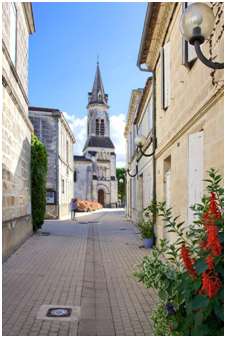
Built in the 12th century and dedicated to Saint Simeon the Stylite, the Church of Bouliac is a real gem of Romanesque art. Located on the site of an old Gallo-Roman oratory known by the writings of Grégoire de Tours for having been a place of miracles in the 6th century, it consists of a bell tower, a nave, a choir and a sacristy. Only the nave still dates from the 12th century.
The fortification of the choir funded by PeyBerland, then parish priest, dates from the 15th century while the bell tower belongs to the campaign to restore rural churches orchestrated by Cardinal Donnet in the 19th century. The major restorations undertaken from the Second Empire did not alter the Romanesque beauty of the building.
The abundant carved decoration contest to the notoriety of this church whether it is its western portal with arches representing important biblical scenes or the capitals which perfectly complement the whole. A true iconography of salvation where Good and Evil are fighting is everywhere deployed. The murals, the rich interior furniture and the gallery of paintings, including one donated by the Emperor Napoleon III, enrich the aesthetics of the building, which was again restored during the 1990s. The restoration of its organ is currently in progress.
2. Castel de Vialle
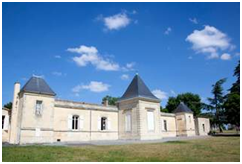
This domain, former noble house of Salles, belonged to various owners including many advisers to the Parliament of Bordeaux. Today it bears the name of Vialle, in memory of this architect who acquired it in 1756 and had it rebuilt. This is at the origin of the current cachet of this domain, which has been modified many times over the centuries.
Purchased by the town hall in 1950, its gardens were dismantled in order to build the current school complex, the leisure center and the village hall. Its park is still used for walking and the castle is used by various associations.
3. Château du Pian
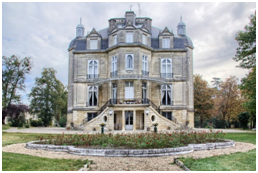
Built in 1873, this castle located on the edge of the commune is said to be built on the site of an old fortified house from the 14th century. As a reward for the services rendered during the Scottish, Gascogne and Flanders wars in which he actively participated, Lord Doat-Amanieu de Bouglon was authorized by the King of England Edward III in 1330, to have his Bouliac lands built a house fortified by thick stone walls and equipped with battlements. This building was replaced around 1500 by a new construction which remained until its destruction by a fire in 1865.
In the 18th century, the building, which then had large outbuildings and wind and water mills, was known as the noble house of Pian and belonged to Jean-André Lamaletie, a merchant in Bordeaux, who sold it in 1770.
Banker Deffes bought the estate on May 29, 1866 and had the present castle built. The work is directed by Victor Pierre Mialhe, architect of the Bordeaux courthouse, and is completed by his son.
Formed on four levels, the building is crossed in its center by a rotunda crowned with a pyramidal canopy through which light enters abundantly.
The estate has long owned a 30 hectare vineyard that produced high quality red wine. The castle grounds are made up of different tree species, some of which are 300 years old.
4. Château de Terrefort
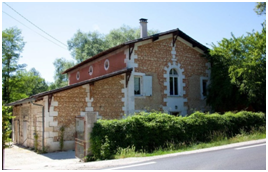
The Château de Terrefort is built on the first natural terrace in the Garonne valley, above the palus and below the steep hill.
This beautiful estate is today divided into several properties. The present castle, which has a U-shaped plan, dates from the end of the 18th century. It follows an older noble house. The whole is built in part on a masonry artificial terrace.
The farm buildings in the North are impressive. At the time, they included the gardener’s accommodation, the stable, the stable, the peasant’s cellar, the castle vat and an attic under the eaves. In the 19th century, there was still a path along these buildings to climb the hillsides in a straight line and reach the avenue de la Belle Etoile.
Opposite the chateau, on the other side of the old road from Bordeaux to Toulouse, current D10, is the old "house of the manager". It is a beautiful building of rubble stone and white stones, plastered with rose.
Finally, a little further down the road, overgrown with vegetation, there is a sort of small square island set in the middle of a pond. This is the old tank of Château Terrefort, which served as a fish reserve for its owners.
5. Port des Collines
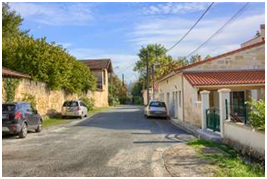
The port des Collines was with the port of Vimeney one of the two ports in the parish of Bouliac.
Today it is difficult to realize that there was a port at this place as the place is calm and the traces of activity disappeared. And yet ... this place was without doubt the most lively place in Bouliac for centuries and one of the most important
Before the development of the train or motorized road transport, commercial transit was mainly done by the Garonne. Served by gabarriers, this small port served as embarkation and disembarkation point. Men, animals and various goods crossed the river to be transported to Bordeaux. The loaded carts came from all the surrounding villages and not only from Bouliac.
The path that connects the town of Bouliac to the port is one of the oldest in the town, if not the oldest. It allows you to join the ancient Bordeaux-Branne route practically in a straight line passing through the port, the hermitage path, the church, Brousse and the avenue de la Belle Star. As proof, from the port, we can clearly see the church and its bell tower in the axis of the Chemin des Collines.
6. Île d'Arcins (Arcins Island)
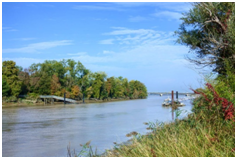
A veritable haven of greenery, the island of Arcins is the closest island to Bordeaux. Located only 6 km from the center of Bordeaux, it is also one of the only islands in the Garonne and the estuary and can be visited.
Very elongated in shape, it stretches over 2 kilometers and spans 37 hectares. Farmed until the war, the island then belonged to INRA (National Institute for Agronomic Research). It was then one of the main places of experimentation in France for the improvement of certain plant species, fruit trees in particular. It averages two degrees higher than on land and almost never freezes.
During the 1999 storm, the island was completely flooded and the buildings too deteriorated to be repaired. INRA then decides to resell the island to an individual who wishes to make it a kind of natural park and open it to the public.
Sources :https://explorons.com/bouliac/sites/eglise-saint-simeon#unfold
https://explorons.com/bouliac/sites/chateau-de-terrefort
https://explorons.com/bouliac/sites/castel-de-vialle
https://explorons.com/bouliac/sites/chateau-du-pian
https://explorons.com/bouliac/sites/port-des-collines
https://explorons.com/bouliac/sites/ile-darcins
VI. History
At the time of Grégoire de Tours (539-594) the site would have corresponded to vicusVodollacensis, according to Bordeaux scholar Camille Jullian.
Apart from several Gallo-Roman monetary treasures, the archaeological discoveries come from the site of the Saint-Simeon church and its cemetery and trace the time of the sanctuary to the Merovingian period.
PeyBerland was parish priest of Bouliac from 1413 to 1427: the chapter of Saint-André de Bordeaux held the cure of Bouliac and PeyBerland was appointed there while he was canon of the cathedral. Father Baurein, who had consulted the Book of Reason, reports that his family owned property at the foot of the Bouliac hills and that he bought a bourdieu with vines next to the church: "... I bought from amanieu de Broglio a bourdieu with its vineyard in this parish of Bouliac, near the church, in a place called Casau Johan, to found a mass on Monday in the church of Bouliac ”.
In the Middle Ages, the pastures in the paliacs of Bouliac are sought after by Bordeaux butchers who graze their cattle there; From the end of the Middle Ages, the vogue for bourdieus belonging to Bordeaux notables was a source of lucrative and not just ostentatious establishments, pioneering areas for the search for quality Bordeaux vineyards.
The archaeological zoning by prefectural decree of the Aquitaine region, dated June 26, 2009, indicates five sensitive areas presenting a heritage risk:
Godefroy and la Saide: port and noble house;
the church: occupation since the Paleolithic;
Macanan;
LocBoue's house;
the fortified house of the Château du Pian;
the medieval mill of Pian.
The arms of Bouliac are emblazoned as follows:
Quarterly, at the first of gules at the castle covered in rump topped with two chimneys, two covered towers weathervane, all open silver and openwork of sand, supported by a wavy river of gold moving from the point, charged with a fish also of silver, the chief sewn of azure loaded with three mountains isolated from three silver bowls, the second of azure with the column of silver loaded with a cross welded with gold on its pedestal, leopard of the same flea market on the whole, to the glory of glory of four points also of gold moving in bar of the senestral angle of the chief, to the azure third to the equipped gabarre and dressed in silver sailing on a rough river of gold moving from the point between two banks also of silver moving sides, said gabarre loaded with barrels of the same, accompanied by a silver crescent in the dexter canton, in the fourth Gules with silver chevron accompanied by three clusters of golden grapes, both of the chef in the chevron direction.
Personalities linked to the municipality:
1. RémiLajus, founder of the group Les Ignobles du Bordelais
2. Jean Nouvel, architect of the Saint-James hotel in Bouliac.
3. Philippe Petit, jazz musician-guitarist who lived in Bouliac.
VII. Other information
In terms of heritage, Bouliac is also rich. Many noble houses and castles mark out the territory of the commune, witnesses of a rich past and a time when the merchants of Bordeaux made their fortune thanks to the commercial activity of the port of the Moon and sought to acquire beautiful residences on the hills just a few kilometers from the big city.
PROTECTING OUR QUALITY OF LIFE TODAY IS ALREADY BUILDING TOMORROW
As defined in the 1987 Brundtland Report, "Sustainable development is development that meets the needs of the present without compromising the ability of future generations to meet their own." The objective is to ensure the establishment of new processes useful for the well-being of individuals while respecting the environment and the needs of future generations.
It revolves around three major actions: social equity, preservation of the environment and economic efficiency. Actions have long been at the heart of municipal initiatives. A Heritage, Environment and Sustainable Development Commission has been created to better respond to these new challenges.
Sources :https://explorons.com/bouliac
https://www.ville-bouliac.fr/qualite-de-vie/developpement-durable/
VIII. Contact information
Bouliac town hall address :
Bouliac town hall
20, place Camille-Hostein
BP 17
33270 Bouliac
Opening Hours of the town hall:
Saturday: from 9 a.m. to 12 p.m.
Monday to Friday: 8:30 a.m. to 12:00 p.m. and 2:00 p.m. to 5:00 p.m.
Mayor :Dominique Alcala (Mandate : 2014-2020)
Phone number: 05 57 97 18 18
Fax: 05 57 97 18 28
Mail : mairie@ville-bouliac.fr
Website :http://www.ville-bouliac.fr
Sources :http://www.cartesfrance.fr/carte-france-ville/33065_Bouliac.html#mairie
